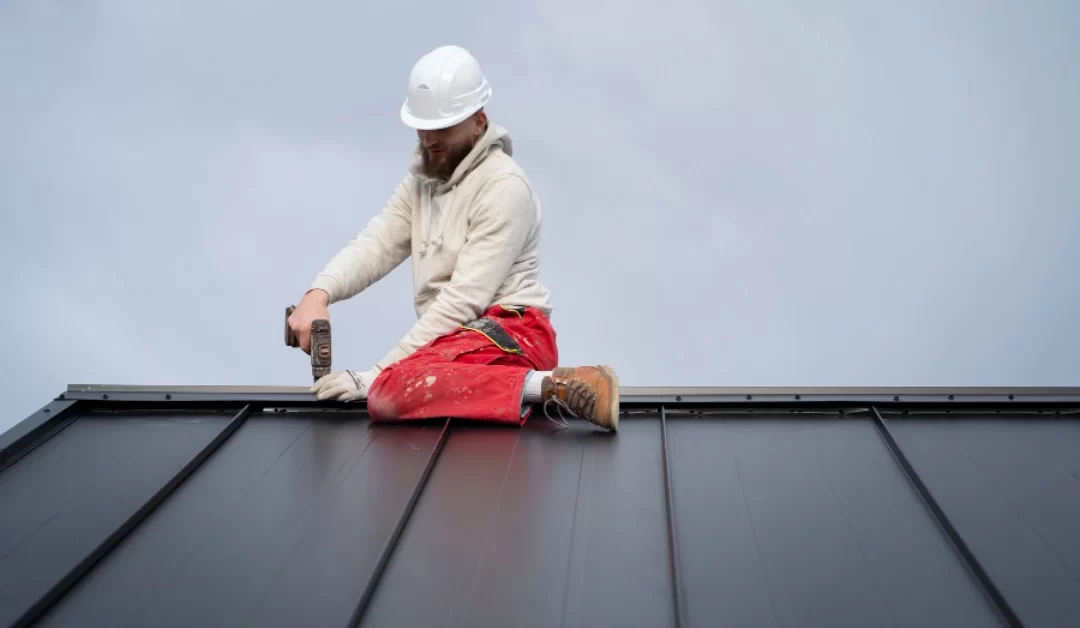Living in the great state of Texas means dealing with a variety of weather conditions, from scorching summers to occasional thunderstorms. And when it comes to protecting your home from the elements, the roof plays a crucial role. One essential component of a leak-free roof is proper roof flashing. In this exclusive blog post, we will explore what roof flashing is and its types and provide you with valuable tips to maintain it effectively. So, let’s dive into the world of roofing flashing and keep your Texas home safe and dry.
What is Roof Flashing?
Roof flashing is a critical element of your roofing system that stops water from seeping into vulnerable areas such as joints, seams, and transitions. It is typically made from durable materials like galvanized steel, aluminum, or copper. Flashing roof acts as a barrier against moisture, redirecting water away from sensitive areas and keeping your home dry and leak-free.
Roof Flashing Types:
- Step Flashing: This type of flashing is commonly used for roofing projects that involve sidewalls, chimneys, or dormers. Step flashing roof is installed in a stair-step pattern, overlapping shingles to create a watertight seal.
- Valley Flashing: Valleys are the areas where two roof slopes meet. Valley flashing is designed to channel water away from these critical points and prevent water from pooling or causing leaks.
- Drip Edge Flashing: Installed along the edges of your roof, drip edge flashing helps to channel water away from the fascia & into the roof gutters, protecting both your roof and the structural integrity of your home.
- Vent Pipe Flashing: Vent pipes protrude through the roof and require specialized flashing to create a watertight seal around them. These flashings often consist of a rubber boot that fits tightly around the vent pipe.
- Ridge Flashing: Ridge flashing is installed at the peak of your roof, where two roof slopes meet. It prevents water from entering the roof through this vulnerable point.
Tips for Roof Flashing Maintenance:
- Regular Inspections: Schedule routine roof inspections, especially after severe weather events. Look for warning signs of damage, such as cracked or missing flashing, rust, or loose fasteners. Address any issues promptly to prevent leaks.
- Clear Debris: Keep your roof free from leaves, twigs, and other debris that can accumulate around flashing areas. Debris can trap moisture and cause corrosion, leading to weakened flashing.
- Clean Gutters: Clogged gutters can overflow, causing water to back up and potentially damage flashing. Regularly clean your gutters to ensure proper water flow and prevent unnecessary strain on your roof.
- Trim Overhanging Branches: Trim back tree branches that hang over your roof. Falling branches can damage flashing and compromise its effectiveness.
- Prevent Ice Dams: In colder months, ice dams can form along roof edges, causing water to back up and seep beneath the flashing. Proper insulation and ventilation can help prevent ice dams and protect your flashing.
- Check Sealant: Many roof flashings rely on sealants to provide an additional layer of shield against water infiltration. Inspect the sealant around your flashing regularly and reapply or replace it if you notice any cracks, gaps, or signs of deterioration.
- Maintain Attic Ventilation: Proper attic ventilation plays a significant role in maintaining the overall health of your roofing system. Adequate airflow helps prevent excessive heat buildup, which can lead to premature deterioration of flashing materials. Make sure vents are clear of obstructions and functioning correctly.
- Address Moss and Algae Growth: In humid climates like Texas, moss and algae can thrive on rooftops, including on flashing surfaces. These organisms can compromise the integrity of the flashing over time. Clean your roof periodically to remove moss, algae, and any other organic matter.
- Avoid Pressure Washing: While it’s important to keep your roof clean, avoid using high-pressure washers to clean the flashing. The intense pressure can dislodge or damage the metal roof flashing material, causing leaks. Opt for gentler cleaning methods, such as using a soft brush or a low-pressure garden hose.
- Hire Professional Help: If you’re not comfortable inspecting or maintaining your roof flashing yourself, it’s always best to hire a professional roofing contractor. They have the expertise and experience to identify potential issues, perform necessary roof flashing repair, and ensure that your flashing is in optimal condition.
- Maintain Proper Insulation: Adequate insulation in your attic helps regulate temperature and prevent moisture buildup. Proper insulation can also minimize the risk of ice dams forming along the roof edge, which can compromise flashing integrity.
- Address nearby Tree Limbs: Overhanging tree limbs can pose a risk to your roof and flashing. During storms, they can scrape against the roof surface and damage flashing or dislodge it. Trim any tree limbs that come into contact with your roof to reduce this risk.
- Don’t Delay Repairs: If you notice any signs of damage or deterioration to your roof flashing, don’t procrastinate when it comes to repairs. Ignoring minor issues can lead to more extensive damage and costly repairs down the line. Address any flashing problems promptly to maintain the integrity of your roofing system.
Bottom Lines:
Your roof is your home’s first line of defense against the unpredictable Texas weather. Proper roof flashings maintenance is essential for keeping your roof leak-free and ensuring the integrity of your home. By following these tips, such as conducting regular inspections, clearing debris, and addressing issues promptly, you can extend the lifespan of your flashing and safeguard your investment.
For all your roofing needs in Texas, Flagstone Roofing & Exterior is your trusted partner. With our expertise and dedication to quality craftsmanship, we ensure that your roof flashing is installed and maintained to the highest standards. Don’t let leaks rain on your parade—choose Flagstone Roofing & Exterior today!
Remember, a well-maintained roof flashing is the key to a leak-free and worry-free home in the Lone Star State. Trust us with your roof to wall flashing needs and experience top-notch craftsmanship that stands the test of time!




